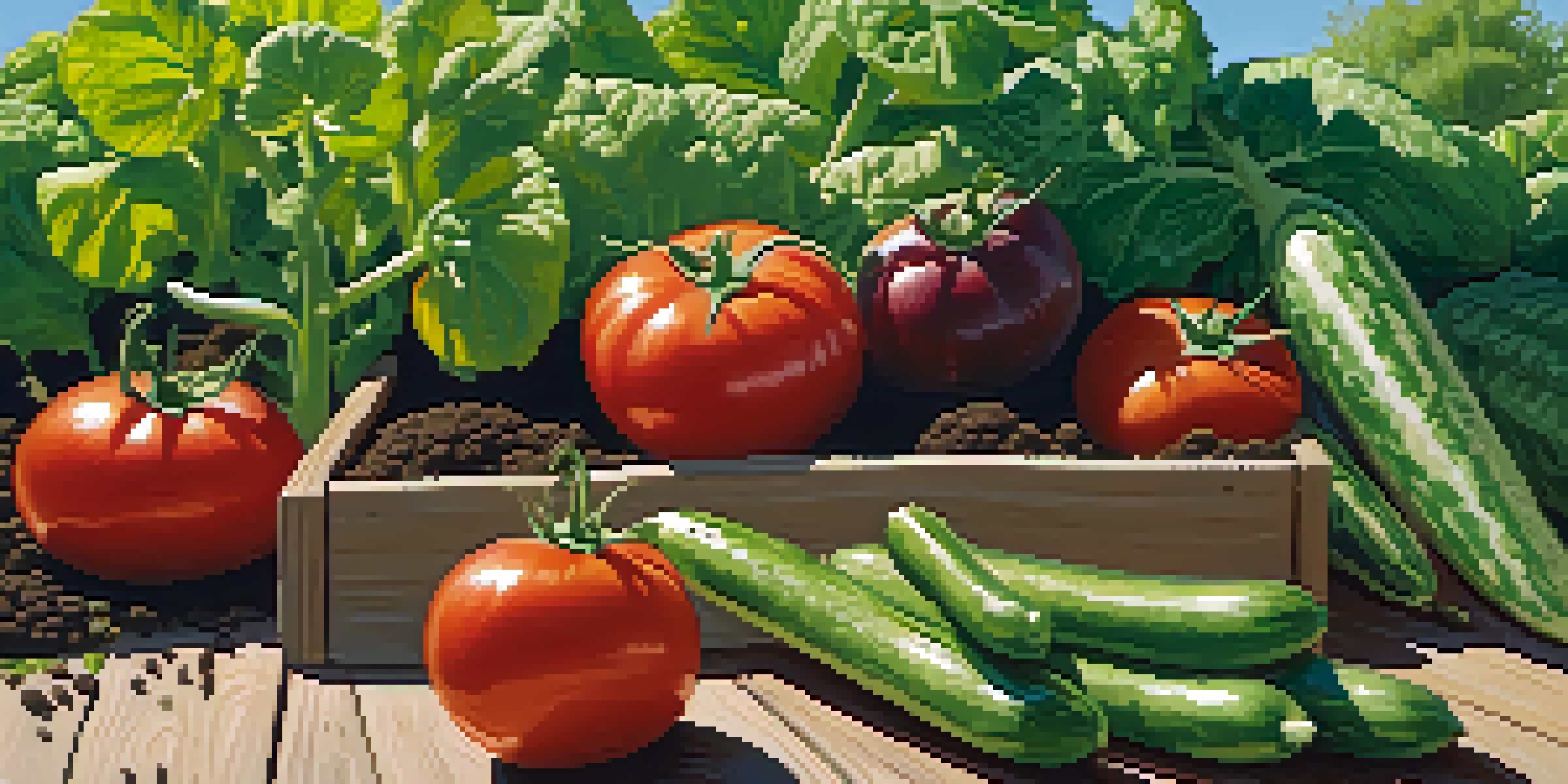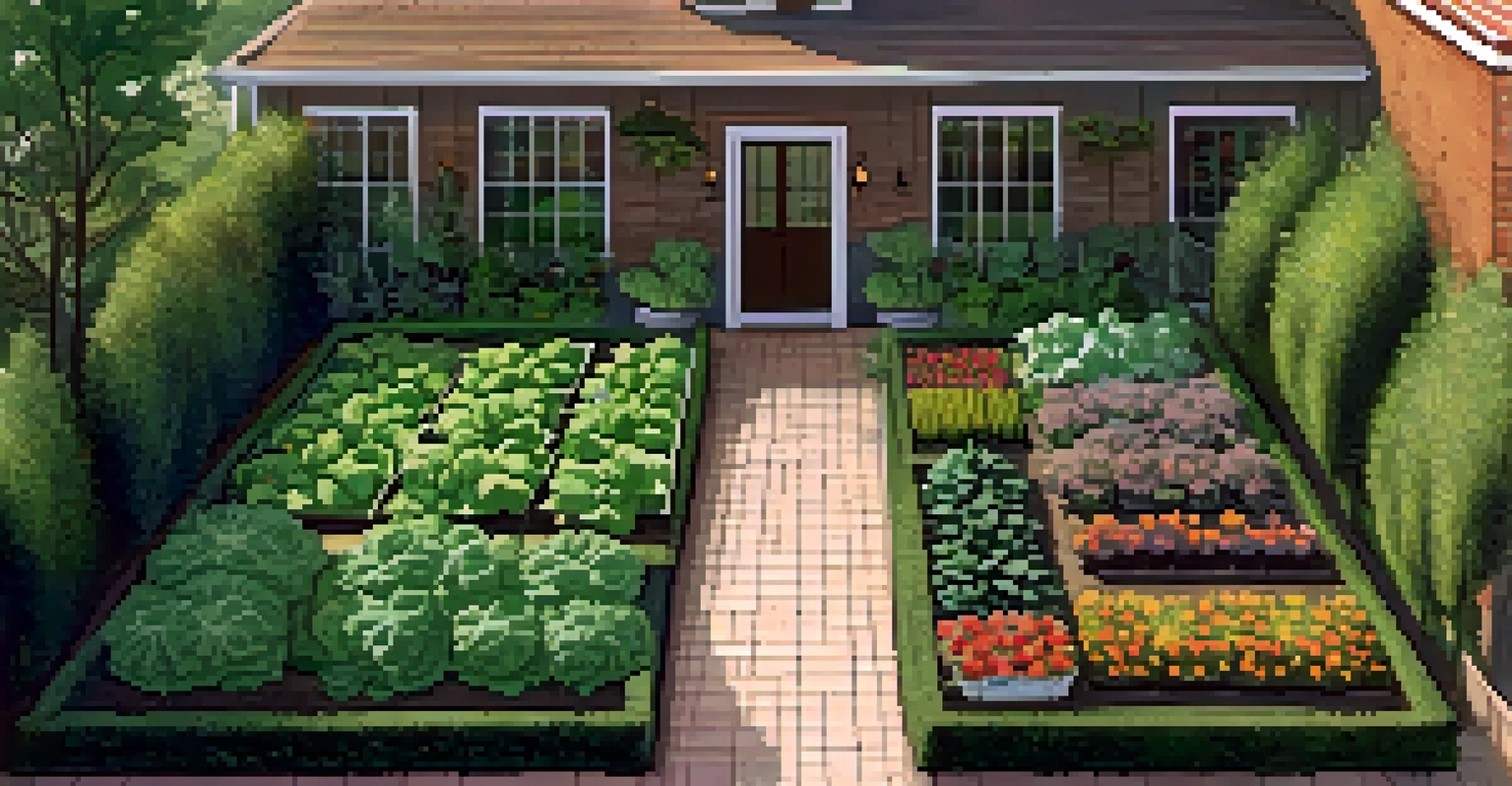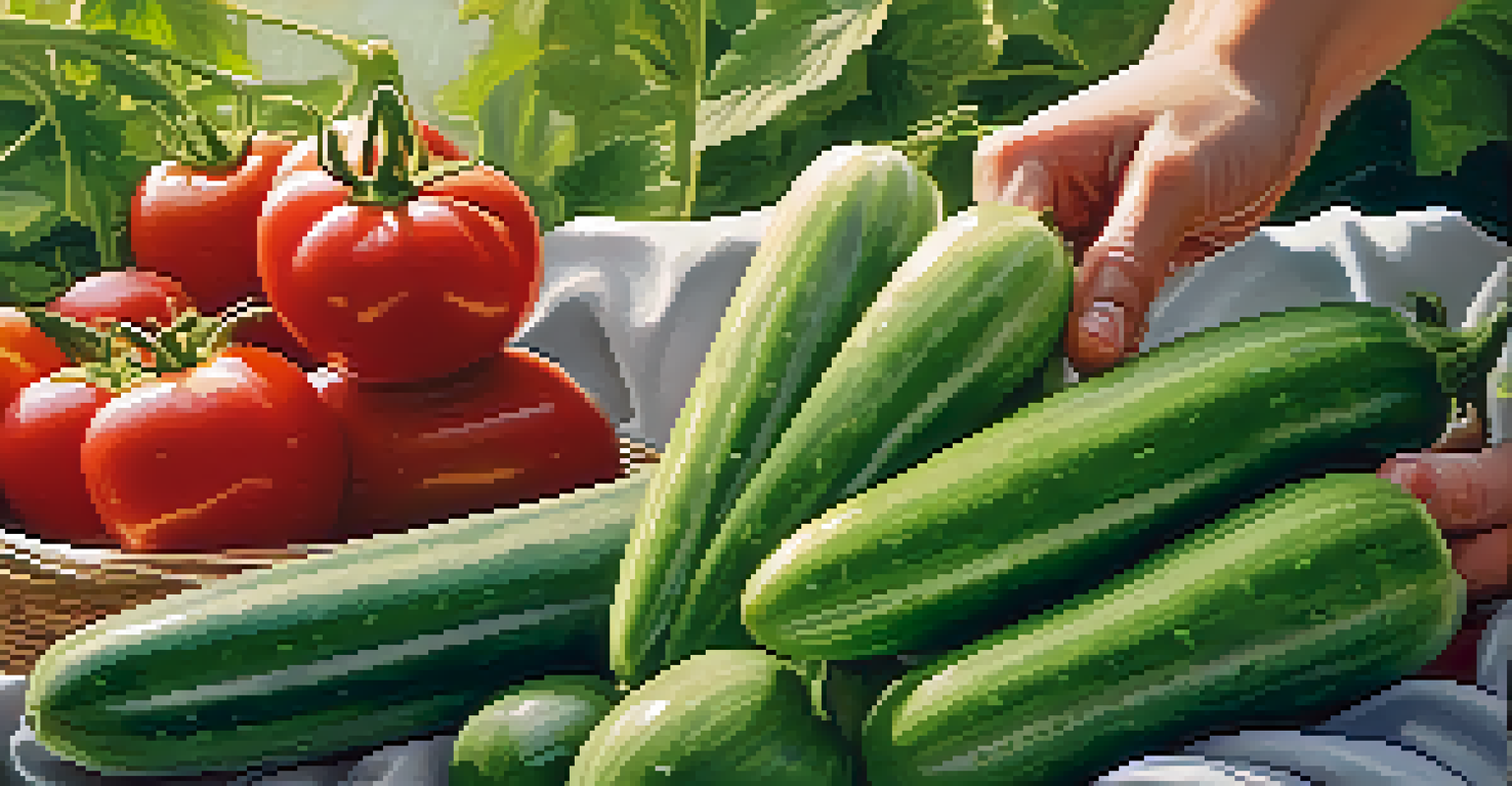Essential Tips for Growing a Thriving Vegetable Garden

Choose the Right Location for Your Garden
Selecting the ideal spot for your vegetable garden is crucial. Aim for a location that receives at least 6-8 hours of sunlight daily, as most vegetables thrive in bright light. Additionally, ensure the area has good drainage to prevent waterlogging, which can harm your plants.
The love of gardening is a seed once sown that never dies.
Consider accessibility when choosing your garden's location. You’ll want to have easy access to water and tools, making maintenance a breeze. If you can easily reach your garden, you’ll be more inclined to tend to it regularly, ensuring your vegetables get the care they need.
Lastly, take note of the wind patterns in your yard. If your chosen spot is windy, consider planting a natural barrier, like shrubs, to protect your plants while they grow. A sheltered location can help your garden flourish, especially during the early stages of growth.
Understand Your Soil Needs and Amend Accordingly
Healthy soil is the backbone of a thriving vegetable garden. Start by testing your soil to determine its pH and nutrient levels. Many local garden centers offer soil testing kits, which can help you understand what amendments your soil may need.

Based on the test results, you might need to add organic matter, like compost or well-rotted manure, to improve soil fertility. This not only enriches the soil but also enhances its structure, making it easier for roots to penetrate and absorb water and nutrients.
Choose the Right Garden Location
Select a sunny, accessible spot with good drainage for optimal vegetable growth.
Remember, different vegetables have varying soil requirements, so research the specific needs of the plants you wish to grow. By tailoring your soil amendments to your garden's needs, you’ll set the stage for a bountiful harvest.
Select the Right Vegetables for Your Climate
Choosing vegetables that thrive in your specific climate is key to a successful garden. Research your USDA hardiness zone to identify which crops will flourish in your region. For instance, tomatoes prefer warmer climates, while kale can tolerate cooler temperatures.
To plant a garden is to believe in tomorrow.
Additionally, consider the seasonality of your vegetables. Plant cool-season crops, like peas and lettuce, in early spring or fall, while reserving warm-season crops, like cucumbers and peppers, for summer. By aligning your planting schedule with the seasons, you’ll maximize your garden's potential.
Don't hesitate to experiment with new varieties, too. Heirloom or local varieties may provide unique flavors and better adaptability to your local conditions. This exploration can lead to surprises and delights during your harvest!
Plan Your Garden Layout Wisely
A well-thought-out garden layout can significantly impact your vegetable garden's success. Start by sketching a plan that includes spacing between plants to allow for air circulation and growth. Crowded plants can lead to disease and reduced yields.
Consider companion planting as you plan. Some plants thrive next to each other, while others can hinder growth. For example, planting basil near tomatoes can enhance flavor and deter pests, creating a harmonious garden ecosystem.
Understand Soil Needs
Testing and amending your soil ensures it meets the specific requirements of your chosen vegetables.
Finally, think about vertical gardening options for space efficiency. Using trellises or stakes for climbing plants, like beans and cucumbers, not only saves space but also improves air circulation and sunlight exposure, benefiting all your crops.
Water Your Vegetables Consistently and Wisely
Proper watering is vital for the health of your vegetable garden. Aim for deep, consistent watering rather than frequent shallow watering. This encourages roots to grow deeper into the soil, enhancing drought resistance and overall plant health.
Water early in the morning or late in the evening to minimize evaporation and ensure your plants absorb as much moisture as possible. Consider using soaker hoses or drip irrigation systems to provide a steady, efficient water supply while reducing water waste.
Keep an eye on weather conditions and adjust your watering schedule accordingly. During hot spells, your garden may require more water, while rainy days might mean you can skip watering altogether. Being attentive to your garden’s needs helps ensure your vegetables thrive.
Fertilize Regularly for Optimal Growth
Regular fertilization is essential to providing your vegetables with the nutrients they need to grow strong and healthy. Start with a balanced fertilizer, like a 10-10-10 NPK (nitrogen, phosphorus, potassium) mix, which supports overall plant growth.
As your plants grow, monitor their progress and adjust your fertilization schedule based on their specific needs. For example, leafy greens may benefit from more nitrogen, while fruiting plants, like tomatoes, may need more phosphorus.
Harvest for Peak Flavor
Timely harvesting enhances the flavor and texture of your vegetables, making them more enjoyable.
Always follow the instructions on fertilizer packaging to avoid over-fertilizing, which can harm your plants. Remember, a little goes a long way, and striking the right balance will keep your garden thriving.
Control Pests and Diseases Naturally
Keeping pests and diseases at bay is crucial for maintaining a healthy vegetable garden. Start with preventive measures, like crop rotation and companion planting, to deter pests naturally. This approach not only helps in pest management but also promotes a balanced ecosystem within your garden.
If you do spot pests, consider using organic solutions, such as insecticidal soap or neem oil, which are less harmful to beneficial insects and the environment. Handpicking larger pests, like caterpillars, can also be effective and satisfying.

Regularly inspecting your plants for signs of distress allows you to catch problems early. By being proactive about pest and disease management, you can protect your harvest and enjoy the fruits of your labor.
Harvest at the Right Time for Peak Flavor
Timing your harvest is key to enjoying the best flavor and texture from your vegetables. Many crops are best harvested in the early morning when temperatures are cooler, as this can enhance their freshness. Check your specific vegetables for ideal harvest times, as each has its own signs of ripeness.
For example, tomatoes should be picked when they are fully colored and slightly soft to the touch, while cucumbers are best harvested when they are firm and still small. Regular harvesting can encourage continued production, leading to a more abundant yield.
Don’t hesitate to taste-test your vegetables as they grow. Experience will help you learn when they’re at their peak flavor, and you’ll find that nothing beats the taste of freshly harvested produce from your own garden.